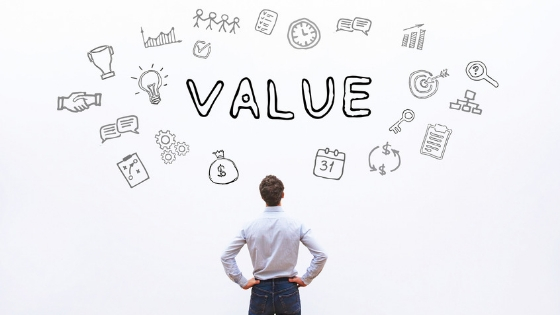Obtain the best possible value for money – that’s the overarching goal of procurement for any organisation. But what does “value for money” actually mean? And is it possible to measure the value for money achieved?
What is value for money?
Value for money (VFM) is a term that’s easily thrown around, but little understood. It is not about buying the cheapest products or services, but striking the balance between the lifetime cost of the purchase and the quality or performance of that product or service.
The NSW Government defines value for money as “the difference between the total benefit derived from a good or a service against its total cost, when assessed over the period the goods or services are to be used.”
In simple terms:
Value For Money = Total Lifetime Benefit – Total Lifetime Cost
Therefore, to measure and achieve VFM, you first need to identify and weigh up the benefits and costs.
There are three types of benefits and costs to consider, which include financial and non-financial factors.
- Up-front e.g. savings, avoided costs and transitioning-in costs
- Whole of life e.g. contingency costs, contract management risks, transitioning-out costs.
- Fitness-of-purpose e.g. the capability of the good or service to meet the precise identified need, compliance with specifications or standards.
There is another way to define VFM. According to consultancy firm KPMG, it’s about finding a balance between the three E’s:
- Economy: Acquisition of resources in appropriate quality and quantity, at minimum cost.
- Efficiency: Maximum output for any given set of inputs or the minimum inputs for any given quantity and quality of goods and services provided.
- Effectiveness: Extent to which any activity achieves the intended results, which can be either quantitative or qualitative.
By effectively striking a balance between the three E’s, you can reduce wastages and inefficiencies to achieve real value for money.
The challenge of measuring value for money
But it’s not that easy. You can only improve what you can measure and there is no universal formula for measuring VFM in procurement. You need to consider the entire mix of costs, benefits, fitness for purpose, timelines and risk.
The biggest challenge here is putting an equivalent money value to factors which cannot be easily valued or quantified. We’re talking about non-financial factors. It might seem easier to simply concentrate on the benefits and ignore the costs, but this wouldn’t show the true value for money.
Also, the factors that are important to one organisation might be of little consequence to another. This means you need to allocate a weighting to each factor at the outset.
Focus on competition
Buying goods and services through competition helps overcome these challenges to a degree. Competition gives you a way to compare the risk and benefit factors of the goods or services you’re procuring. There’s less need to “measure” the non-monetary factors, as you can simply use them as a KPI for suppliers to meet.
Never stop measuring
At the end of the day,procurement decisions should be made on the basis of a long-term view of value for money. Don’t only measure value for money at the procurement stage; review it at different stages in the life of the contract. This will help you examine whether planned VFM benefits are being achieved.
Over to you
What I’ve provided in this article is an introduction to value for money and some of associated challenges. As one of the foundational concepts in procurement, it requires an in-depth study and understanding if you want to be able to effectively apply it to your workplace.
Learn more about value for money and other key procurement concepts in our courses here






